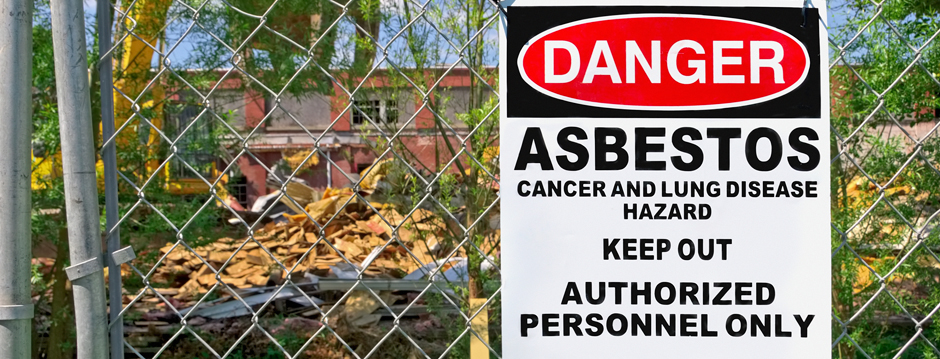
Asbestos can be found in almost any home, construction, or public building. It will often only become apparent when it is disturbed, i.e. during renovation work.
There are many materials asbestos surveyors will check when looking for the substance, but some are more dangerous than others as they are more likely to get damaged and expel the harmful fibres into the air.
When asbestos is disturbed, the fibres released can be breathed in, causing health issues to develop. Often, these issues and diseases are only detectable years later, when it is too late to do anything about them. This is why protection when dealing with potential asbestos-containing materials is vital.
Where can you find asbestos?
Asbestos can be found in the following areas of a home or construction project:
- Roofing tiles (including corrugated roofing, roofing slates, and soffits)
- Insulation under roofs, pipes, or beams
- Insulation around windows and doors
- Piping
- Cement-based materials
- Ceilings
- Textured walls
- Water cisterns
- Painted surfaces
- Plastic floor tiles
- PVC tiles
- Soundproofing
- Old fire blankets
Asbestos is most common in buildings erected pre-2000. It was banned in 1999, but this means that renovation projects on older properties are causing issues, especially if they have largely been untouched and are now forming part of a DIY project. Thankfully, we are now more aware of the risks and dangers of asbestos than ever before.
Still, an average of 5,000 people every year die from diseases caused by previous asbestos exposure. It is still a risk to deal with.
The HSE states insulation and moulded or preformed lagging used in the thermal insulation of pipes can usually cause the most damage, as they can be made of up to 85 per cent asbestos fibres and release them easily.
In other materials, such as cement, it is very tightly bound and will only be released if the surface is drilled into, damaged or broken - which can still occur on a building site during construction work.
Asbestos loose packing is among the most dangerous and this can be found in ceiling voids as it is used as a fire break due to its flame-resistant properties. Similarly, sprayed asbestos is often used to protect against fire in panels and partitions, ducts, fire breaks and cement sheets where there is structural steelwork.
Some ceiling tiles, often found in offices, contain fibre, as do insulating boards that can be used in numerous places around commercial buildings including ceiling and wall panels, partitioning, ducts and thermal insulation. Tiles can be made from a variety of materials, such as vinyl or thermoplastic.
Corrugated sheets often used in roofing and wall cladding, asbestos cement in gutters, rainwater pipes and water tanks, bitumen roofing material and some texturing coatings can be dangerous, as can millboard and paper products used to insulate electrical equipment.
Many of these materials are found in both commercial and residential buildings, meaning construction workers may be at risk no matter what type of property they are working on. If asbestos fibres are released they could also affect those who live or work in the property, highlighting just how important safety and awareness of asbestos management really is.
The following materials are unlikely to contain asbestos:
- stone
- brick
- breezeblock
- mortar
- concrete
- metal
- glass
- wood
- furnishings and fabrics
However, they can still conceal asbestos, especially that used for insulation and around pipework, or around windows.
- 2024
- 2023
- December 2023 (13)
- November 2023 (10)
- October 2023 (6)
- September 2023 (10)
- August 2023 (20)
- July 2023 (21)
- June 2023 (17)
- May 2023 (17)
- April 2023 (17)
- March 2023 (14)
- February 2023 (15)
- January 2023 (7)
- 2022
- December 2022 (6)
- November 2022 (12)
- October 2022 (24)
- September 2022 (14)
- August 2022 (12)
- July 2022 (15)
- June 2022 (18)
- May 2022 (14)
- April 2022 (9)
- March 2022 (5)
- February 2022 (5)
- January 2022 (2)
- 2021
- December 2021 (7)
- November 2021 (10)
- October 2021 (1)
- September 2021 (1)
- August 2021 (3)
- July 2021 (3)
- June 2021 (4)
- May 2021 (1)
- April 2021 (1)
- March 2021 (2)
- February 2021 (1)
- January 2021 (1)
- 2020
- 2019
- 2017
- 2016
- 2014
- 2013
- 2012
- 2011


